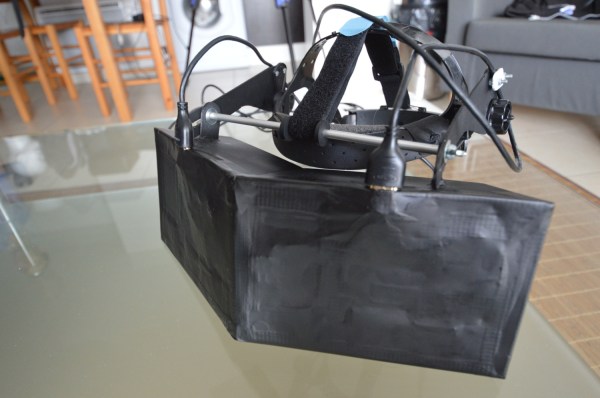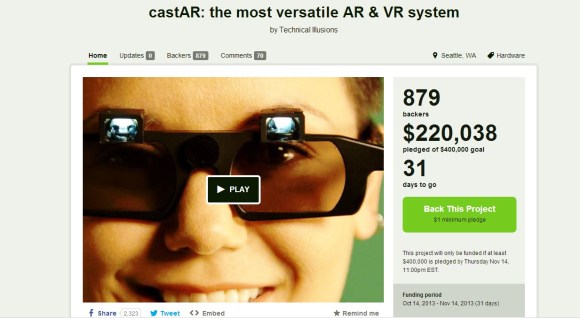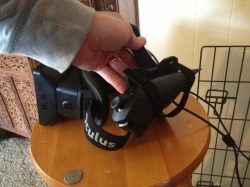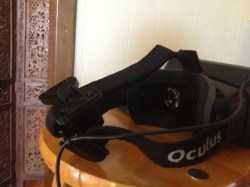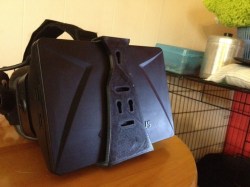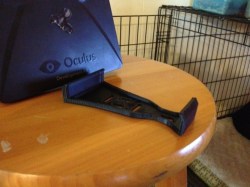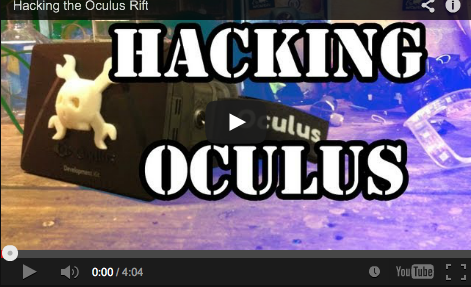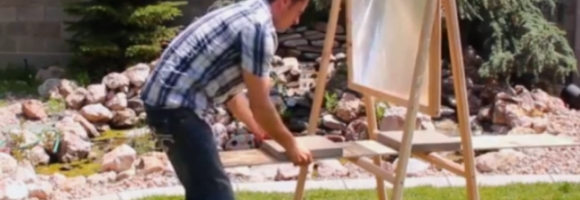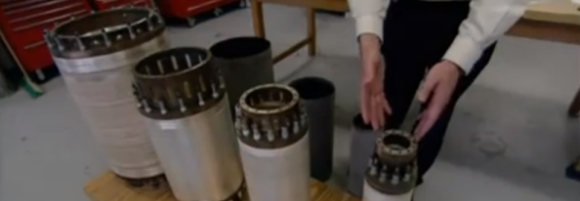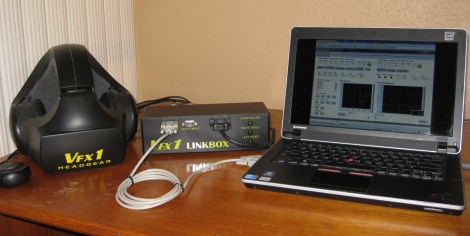Head mounted displays are coming in hot and heavy this year. InfinitEye doesn’t have an official web page yet, so we’re linking to a review done by TheRoadToVR. Note that this is the second version of the display. InfinitEye released plans for their V1 HMD back in February. The InfinitEye prototype looks strikingly like the early Oculus Rift prototypes. Gaffers tape and what appears to be the frame from a face shield hold together the optical system. It’s this optical system which is interesting. InfinitEye has decided to go with head mounted LCD screens, similar to the rift, and unlike castAR’s projection system.
The InfinitEye team decided to go with two screens, giving them a whopping 1280×800 resolution per eye. The optics are also simple – fresnel lenses. This is all similar to the first version of the goggles, however the InfinitEye team claims that this new edition provides a 210 degree field of view. What we don’t know is exactly what they changed. We’re curious if the wider field of view will reduce the Sim Sickness some of us have felt with the rift – though to be fair, almost any head mounted display requires some time to adjust. What we are sure of is that the future is bright for virtual (and augmented) reality.
Continue reading “InfinitEye HMD Brings 210 Degree FOV To The Party”

